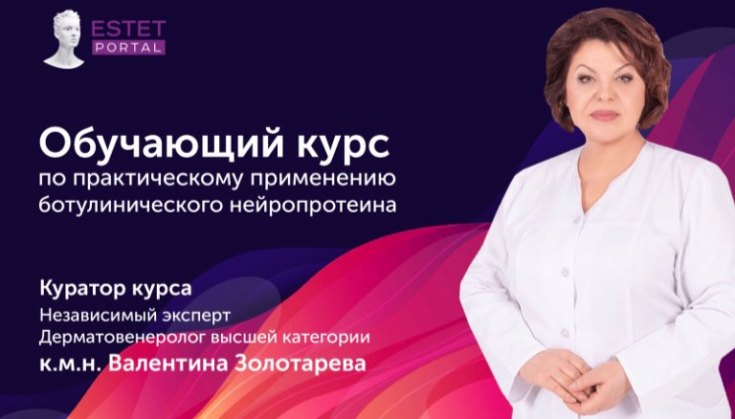FDA approved botulinum toxin for upper facial wrinkles in 2002. Since that moment, many studies have been conducted confirming the safety and effectiveness of botulinum toxin preparations, various injection techniques and products for botulinum therapy have been developed, and the list of indications for the use of neurotoxins in cosmetology has expanded. However, some myths about botulinum therapy that have not been scientifically confirmed continue to exist in the practice of many cosmetologists. Will debunk them in the article estet-portal.com Valentina Zolotareva –candidate of medical sciences, dermatovenereologist of the highest category, cosmetologist.
- The diffusibility of botulinum toxin type A formulations
- Myths about protocols for managing patients after botulinum toxin therapy
- Ethnic Myths: Race and Botulinum Toxin Dosage
Diffusion ability of botulinum toxin type A formulations
Regarding the diffusion ability of various BTA formulations, many scientists have been quick to speculate that Dysport, which contains a lower molecular weight protein than Botox, will primarily diffuse further away from the injection site.
However, there is no evidence from serious clinical trials to support this assumption.
The dosage of botulinum toxin preparations is carried out in accordance with the instructions of the manufacturer of the preparation.
Diffusion can be uneven and is highly dependent on the density of receptors in any given area. There is no conclusive evidence that one botulinum toxin type A formulation is superior to another. However, when the doses are not equivalent, the results are not equivalent for obvious and obvious reasons.
Myths about protocols for managing patients after botulinum toxin therapy
There are various guidelines and restrictions related to protocols for managing patients after botulinum toxin therapy. Many of them are widely used despite there is no evidence of their effect on the effectiveness of the procedure, the frequency or severity of adverse events.
Read also: On- and off-label use of botulinum toxin in cosmetology
These myths include:
- during the injection of botulinum toxin, the patient must be in a sitting position;
- after the injection of botulinum toxin, do not drink alcohol;
- keep your head upright for 6 hours after the injection to avoid unwanted spread of the toxin;
- within 4 hours after the injection of botulinum toxin, the patient should mimic;
- after the procedure, it is necessary to perform a muscle massage to remove the tubercles after injections;
- To increase comfort and reduce the risk of bruising after injections, ice or cooling of the treated area should be used.
Read also: Botulinum Therapy: Reasons Why Botulinum Toxin May Not Be Effective
In fact, according to the laws of pharmacokinetics, correctly injected botulinum toxin works in the target zone and does not diffuse already 10-15 minutes after the injection. Therefore, active facial expressions, head position, alcohol intake do not affect the effectiveness of botulinum therapy.
When it comes to massaging the muscles, some authors recommend caution, as diffusion is almost impossible to control.
Also, some studies show that cooling the treated area may reduce the effectiveness of botulinum toxin therapy. Therefore, it may be worth abandoning this method until more reliable data is obtained.
Ethnic myths: race and dosage of botulinum toxin
When conducting botulinum therapy, a whole range of variable factors:
should be taken into account- skin thickness;
- muscle development;
- sizes of bone structures.
Follow us on Instagram!
Skin quality and dose of botulinum toxin
The thickness and texture of the skin affects the doses of botulinum toxin. Although the injections are made into the muscle layer, the injection technique may depend on the thickness of the dermis. Some studies have suggested that Asians have thicker skin than Caucasians. This pattern is due to the high content of collagen fibers in the skin of Asians. Therefore higher doses of botulinum toxin.
may be required for therapeutic effect.In her clinical practice, the author has not found evidence that race and ethnicity significantly affect the dosage of botulinum toxin.
Other studies have shown that Asians may require even lower doses of botulinum toxin to achieve the same therapeutic effect, than Caucasians. In a study by K. Arimura et al. using electrophysiological monitoring, differences in the muscle relaxant effect of botulinum toxin type B were evaluated. The results obtained indicate that the severity of the muscle relaxant effect was comparable in both populations.
You may also be interested in: Methods to increase the duration and effectiveness of botulinum toxin
To date, we do not have sufficient knowledge of how race affects the doses of botulinum toxin required to achieve a therapeutic effect.
More interesting videos on our YouTube-channel!








Add a comment